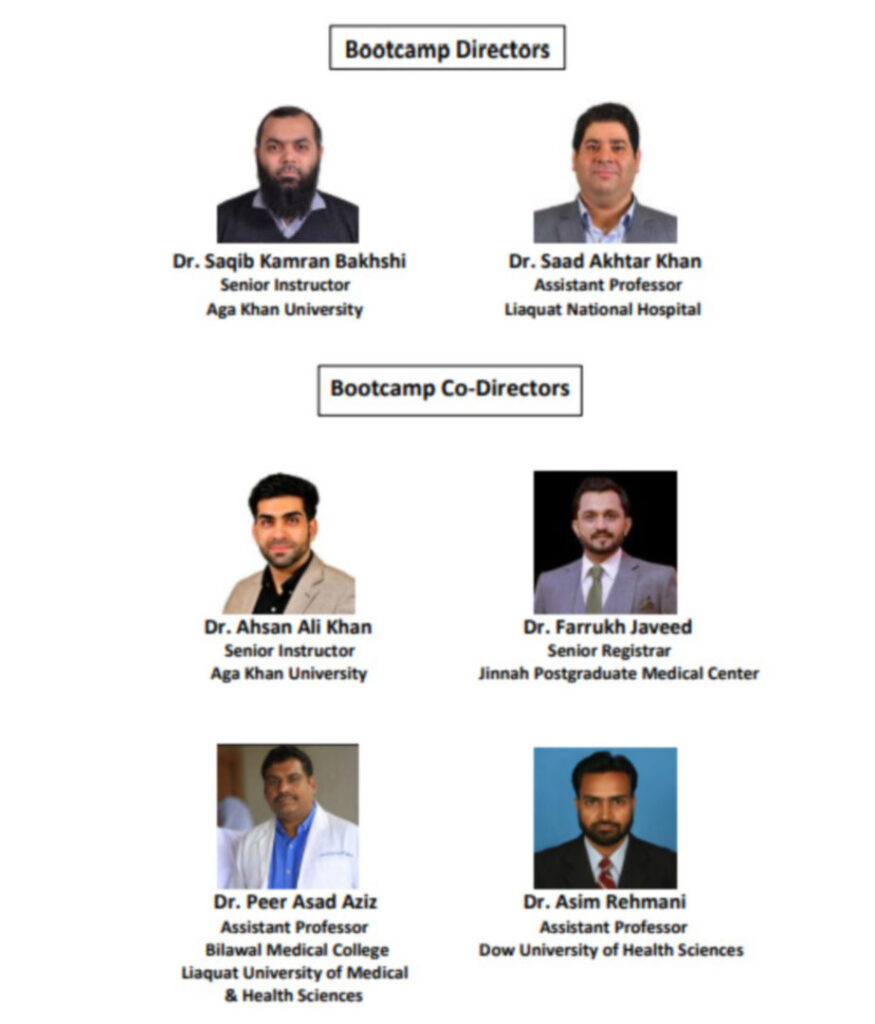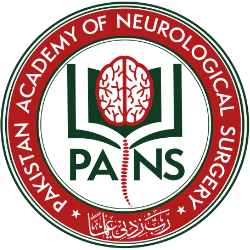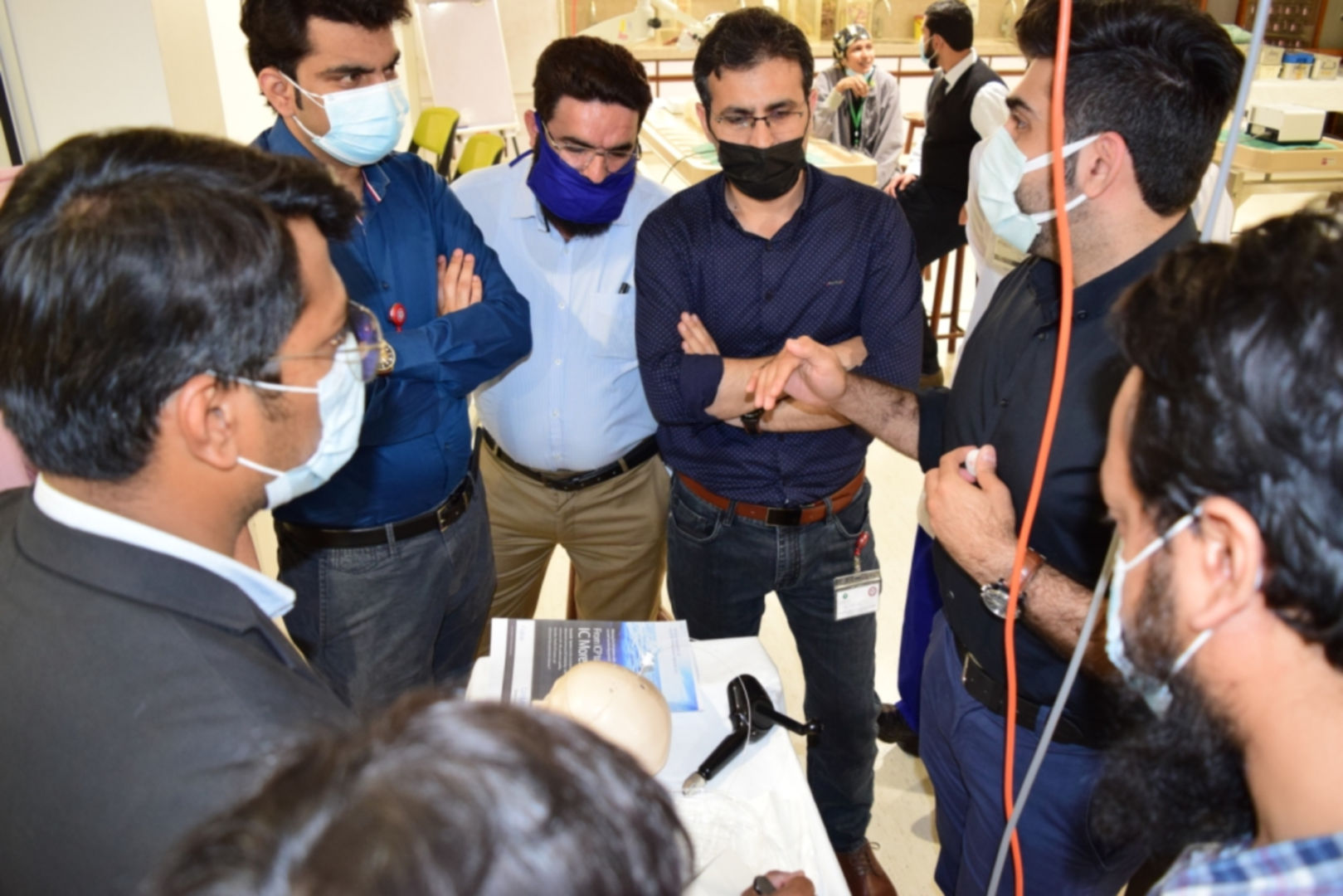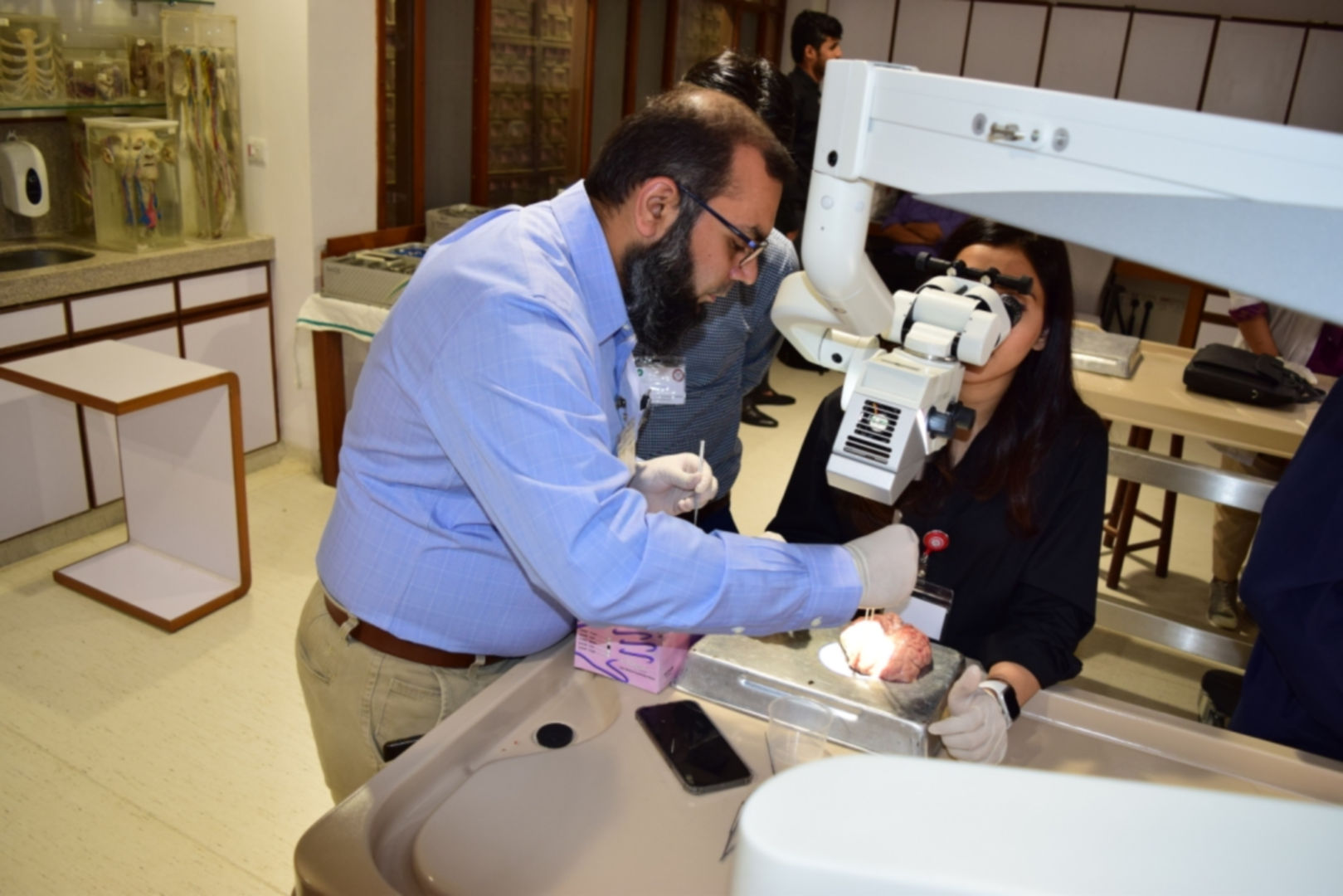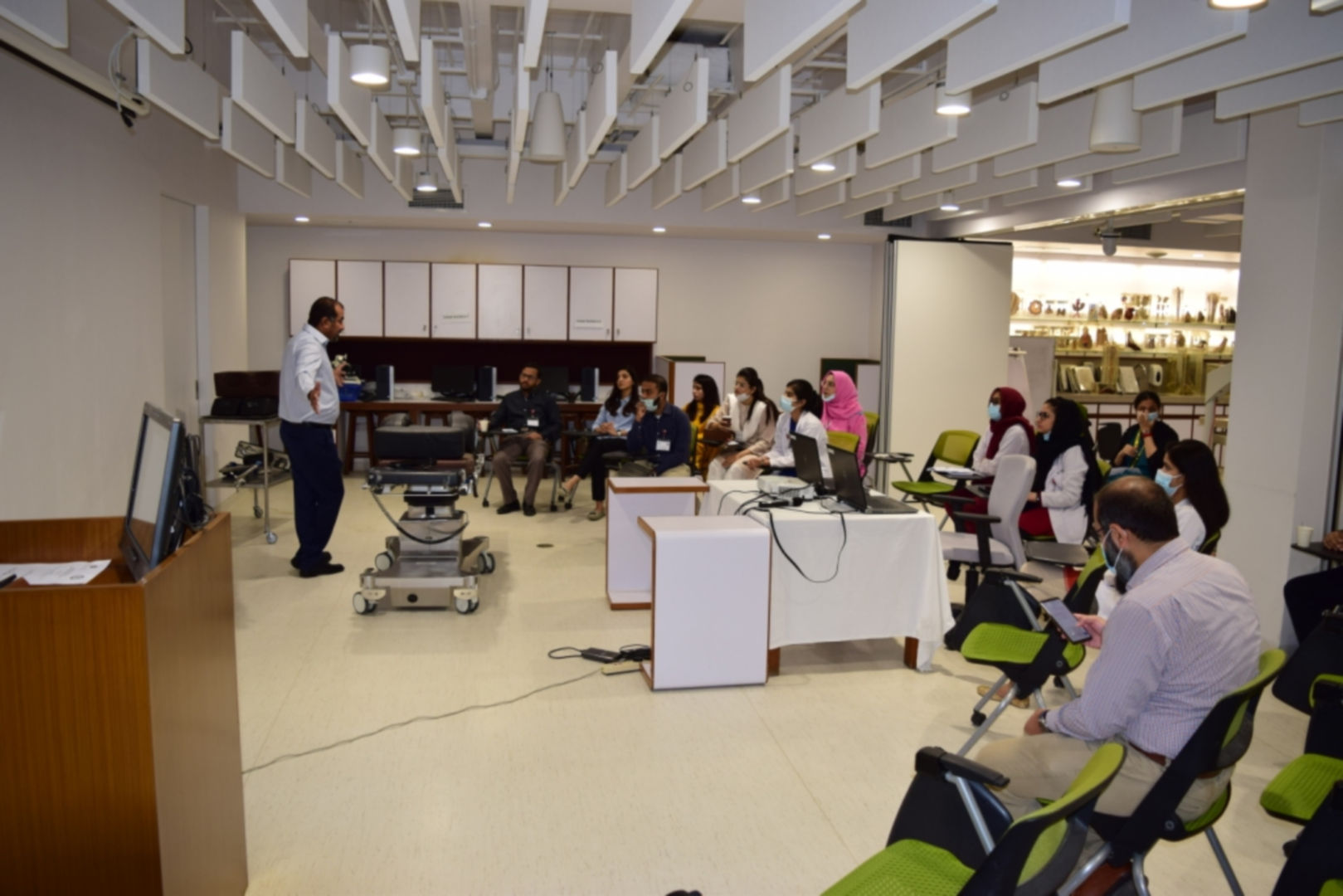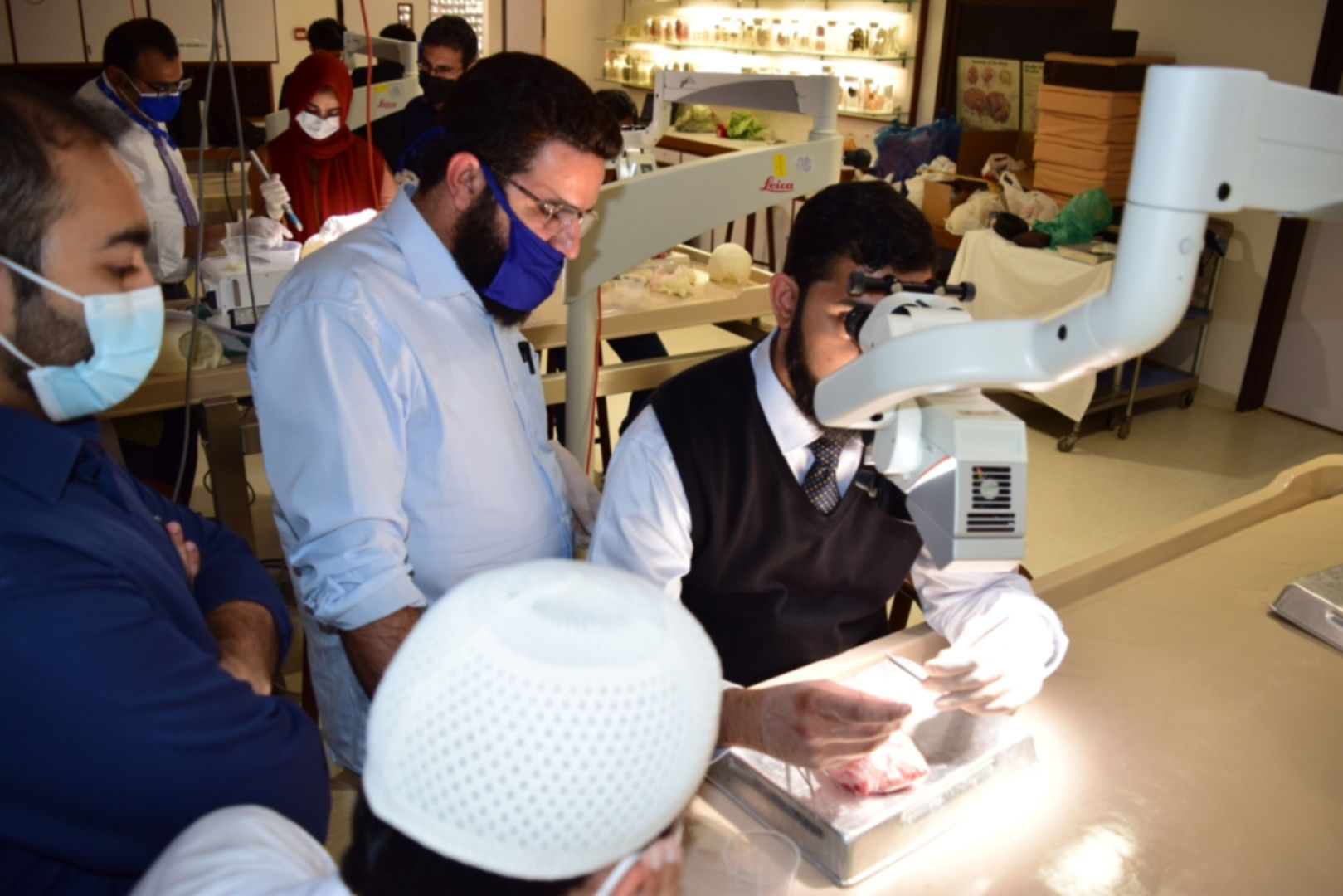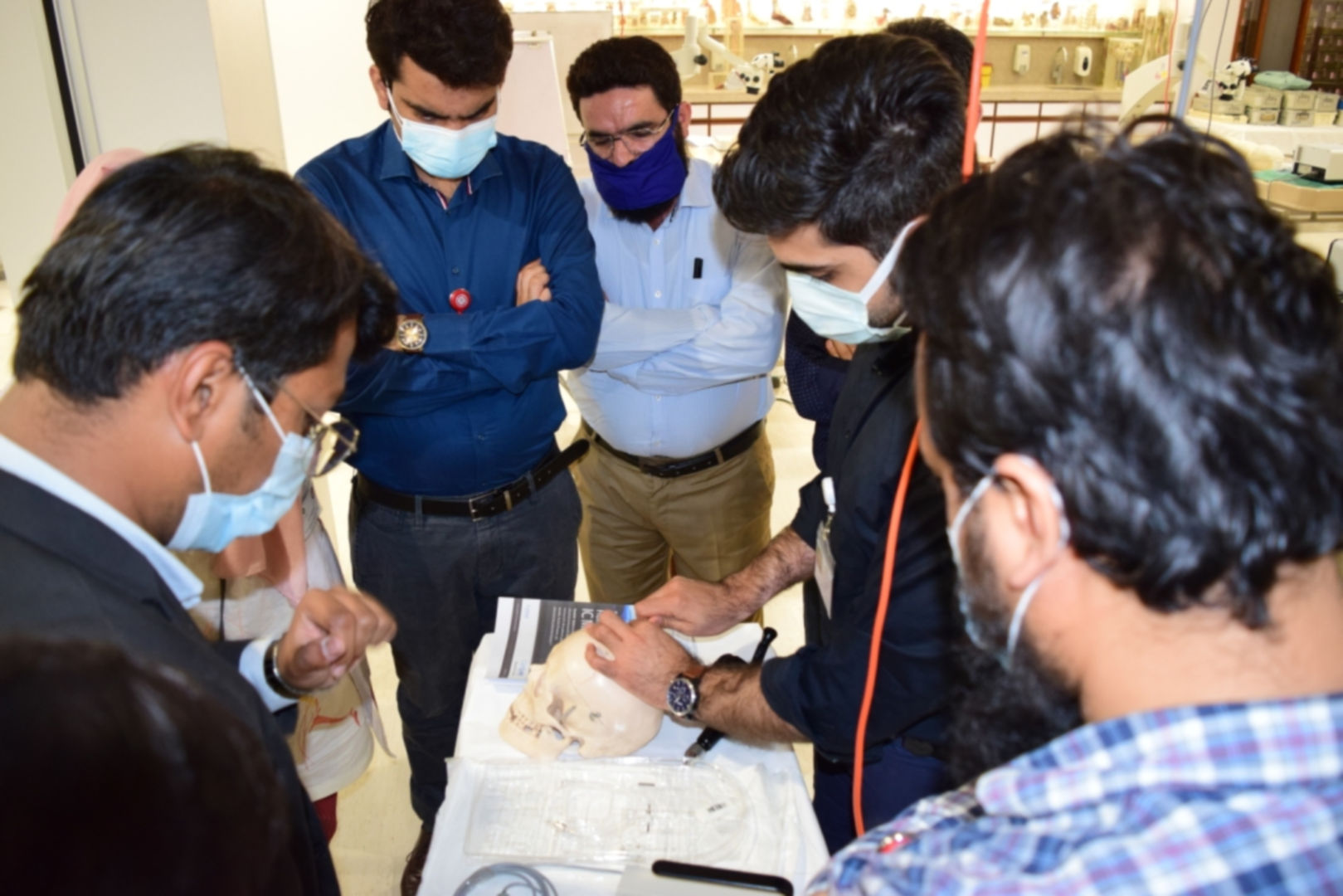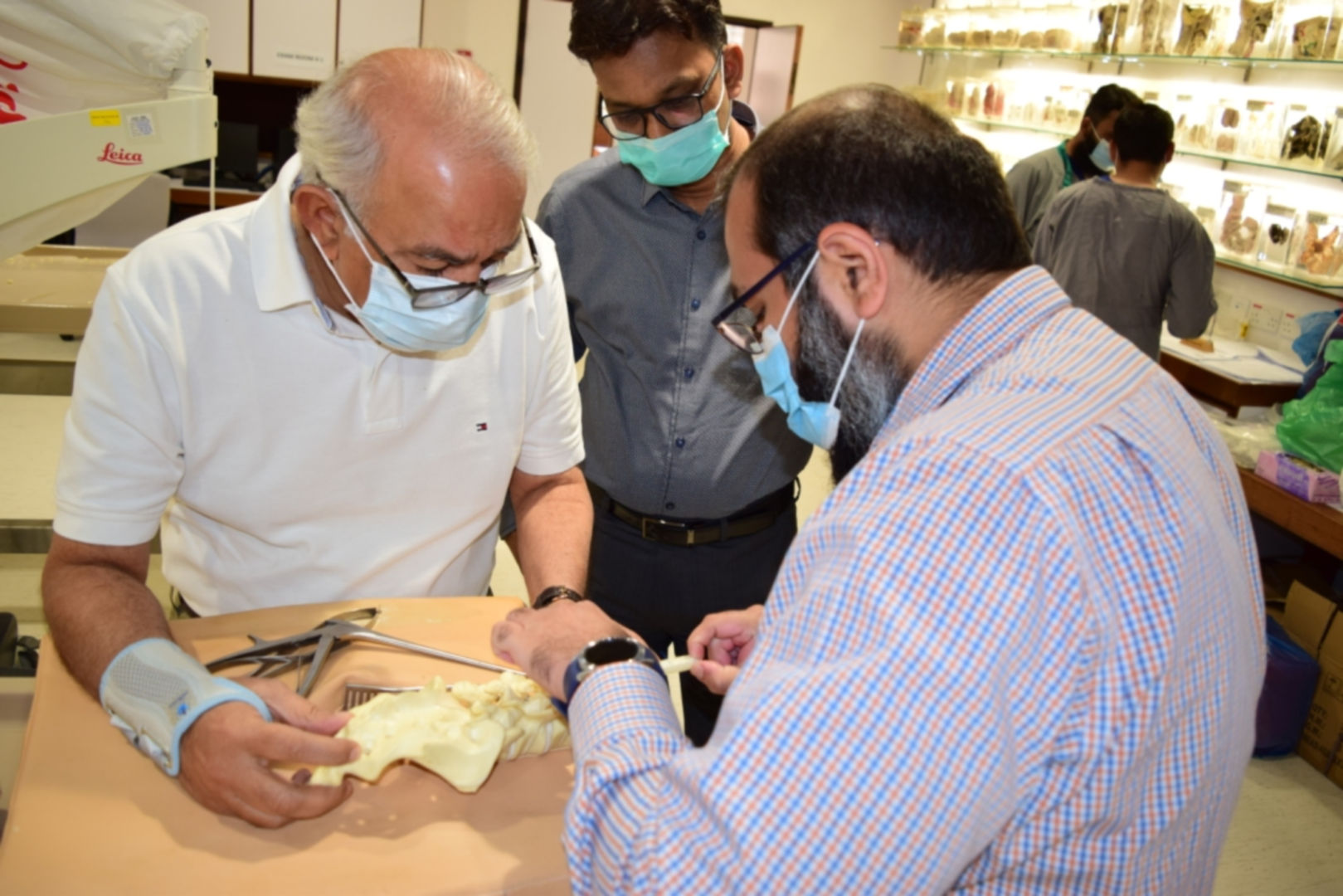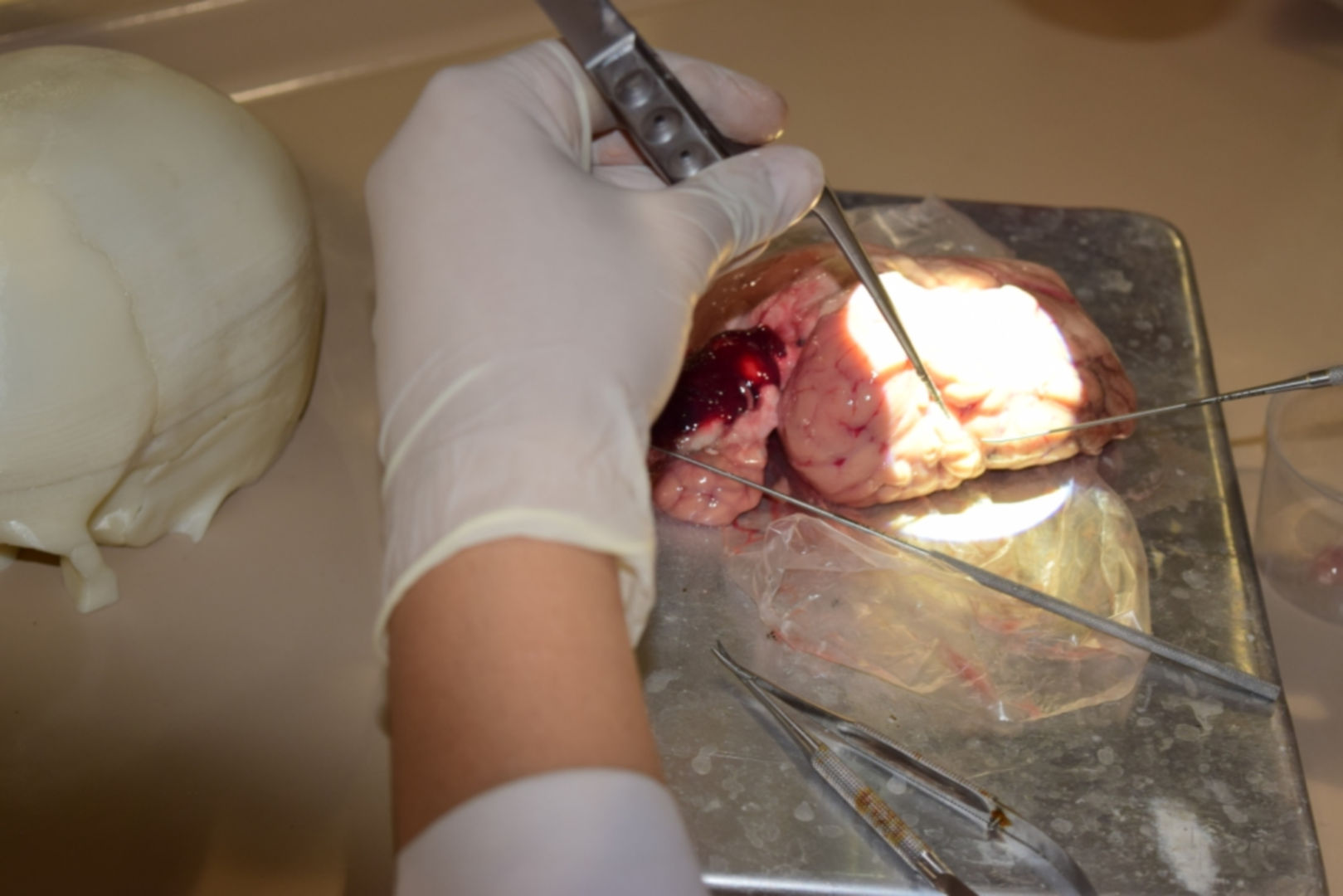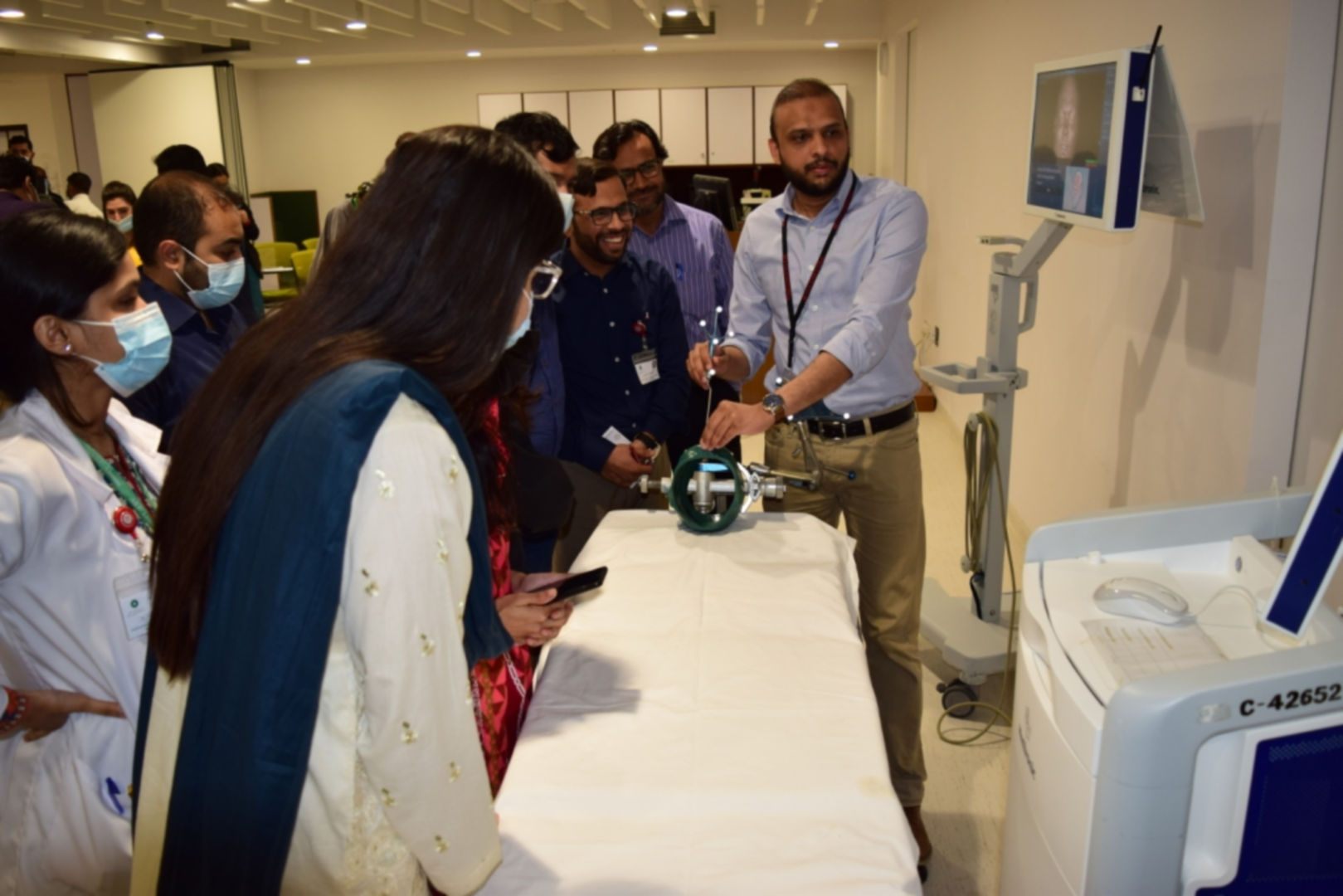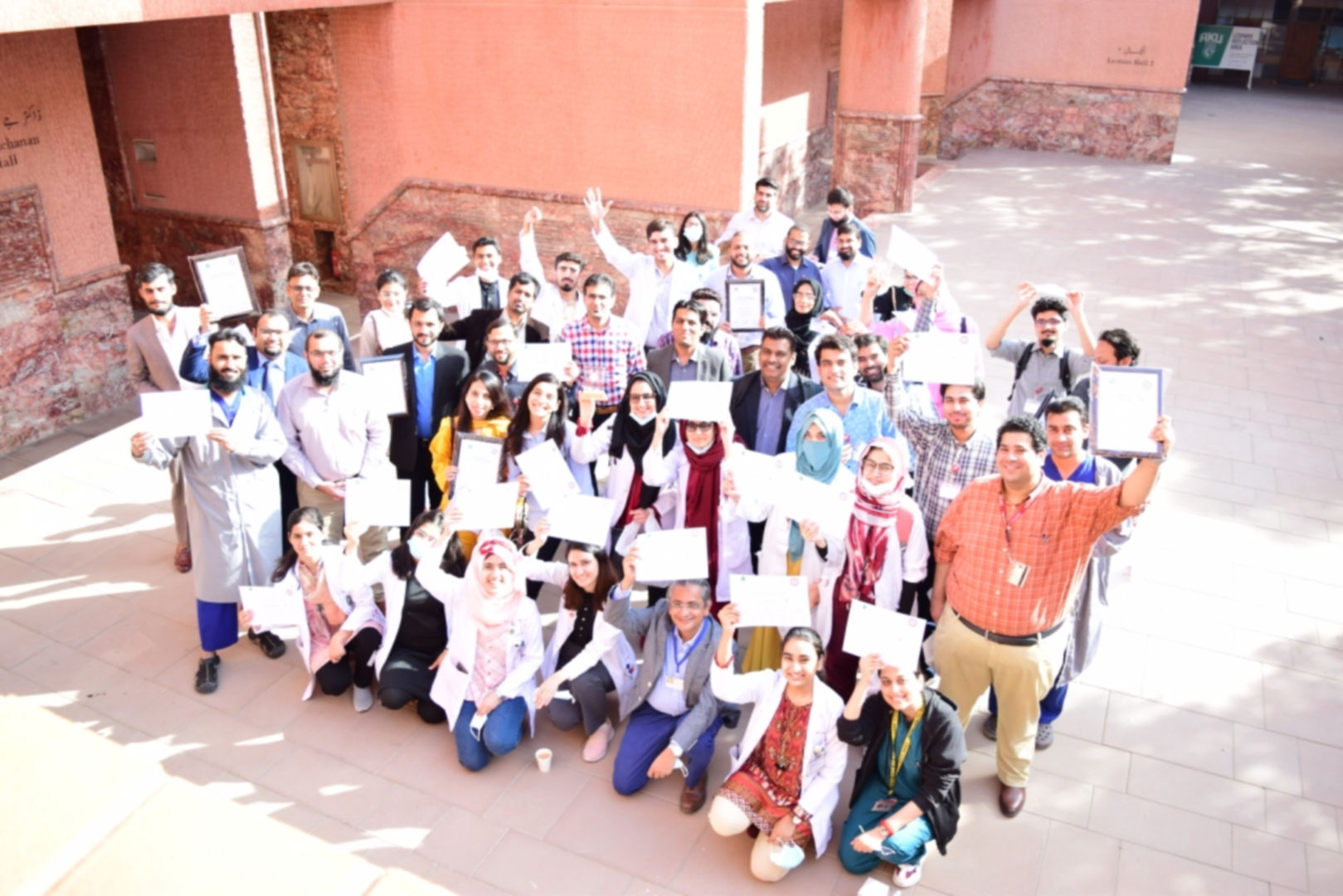Keeping up with its aim of organizing educational activities pertinent to neurosurgery, for all levels of trainees, PANS envisioned a boot camp for junior neurosurgery residents from five teaching hospitals in Sindh. The concept of neurosurgery boot camps is not new, as it is now an integral part of the training curriculum in the United States of America. The purpose is to equip junior trainees with the basic knowledge and skills they can later build on during their residency training.
Bootcamps are meant to provide every trainee an opportunity for practice, so the concept of regional boot camps is to keep participation diversified yet limited, to promote individualized training. PANS will encourage and support similar boot camps in other regions of Pakistan as well, with a uniform curriculum across the country.
Another important aim of the Bootcamp will be to break the ice and bridge the communication gap between faculty and residents, and among the residents of different institutes. A major highlight of the Bootcamp will be virtual mentorship sessions for smaller groups of residents with foreign neurosurgery faculty, that will provide them an opportunity to interact with some of the best neurosurgeons in the world, and to develop a communication channel for future collaborations.
Course Content
Course content will comprise didactic lectures and hands-on training and practice of basic neurosurgical skills. The lectures will be interactive, covering all important and basic topics of neurosurgery including basic neurological examination, managing emergency scenarios inward and emergency room, basics of neuroradiology, and soft skills like effective communication, ethics, and professionalism. Reading material will be provided to attendees a week before the Bootcamp.
For hands-on practice, the curriculum would include making burr holes and performing craniotomy on 3D printed skulls, handling external ventricular drains and lumbar drains, application of Mayfield clamps, positioning the patients on OR table, simulated brain microdissection, lumbar spinal laminectomy, and dural closure.
